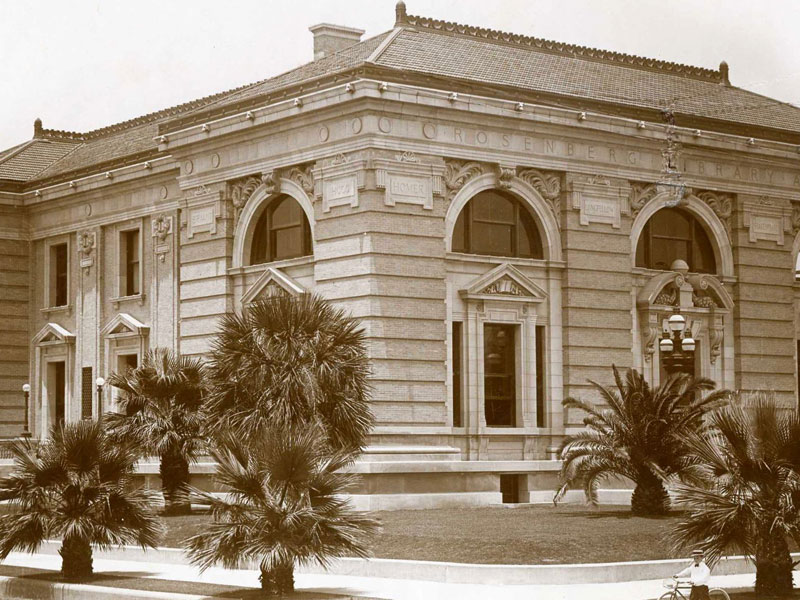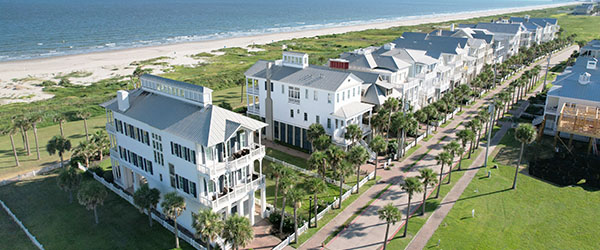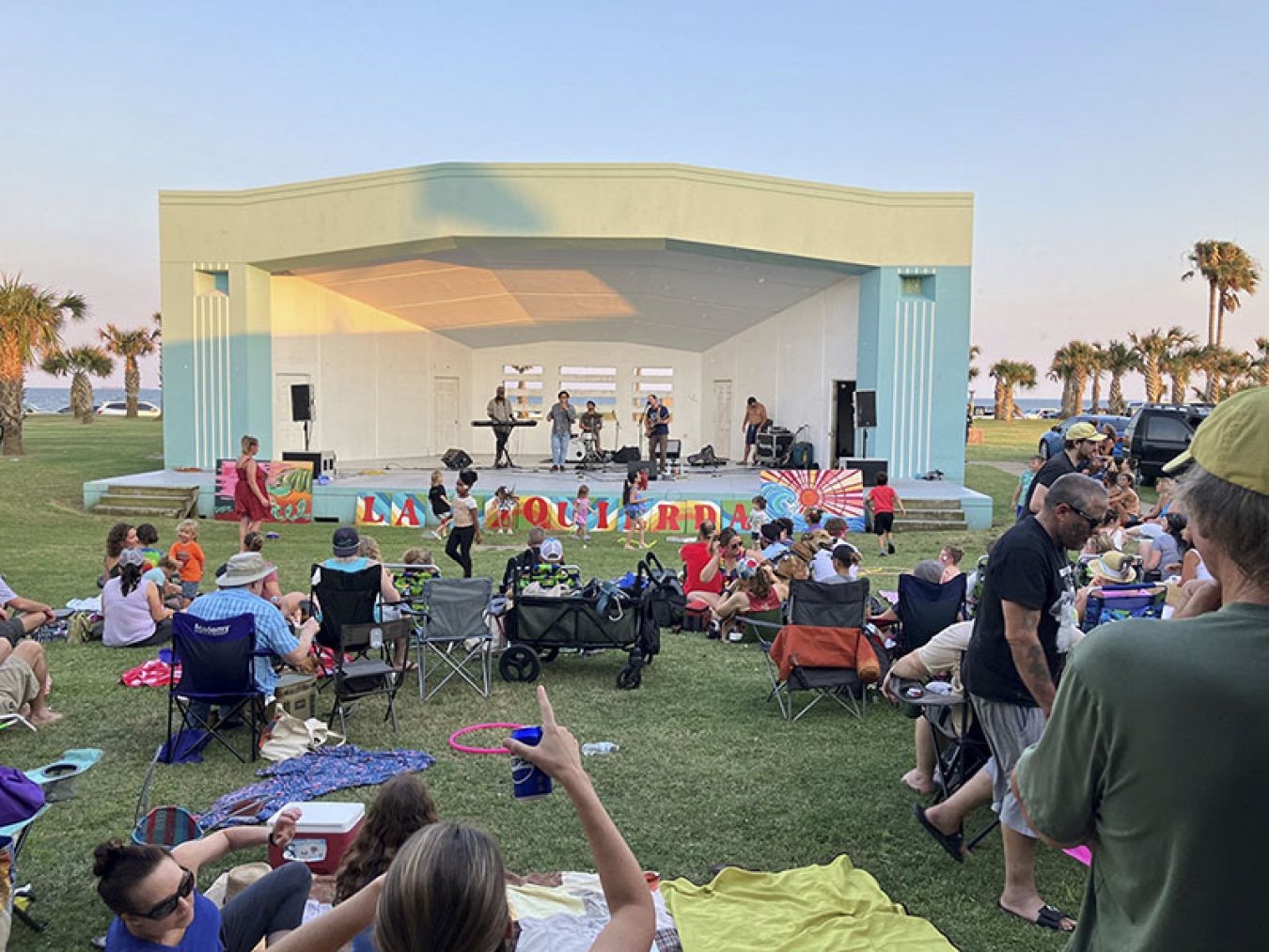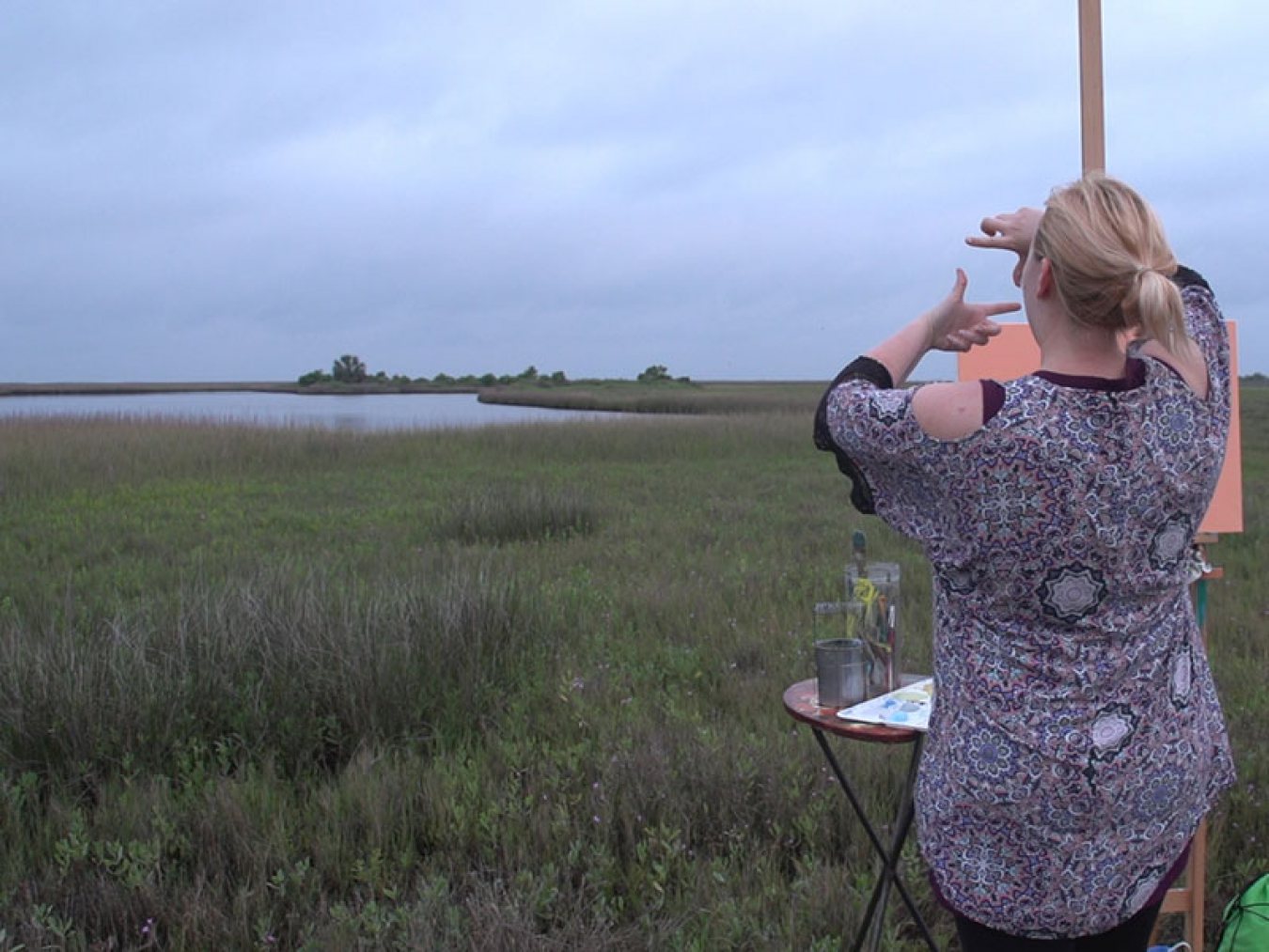1914 Gearhart Knitting Machine
Rosenberg Treasure of the Month
During the month of August, the Rosenberg Library is displaying a special knitting machine that was utilized during World War I to help civilians make socks for soldiers.
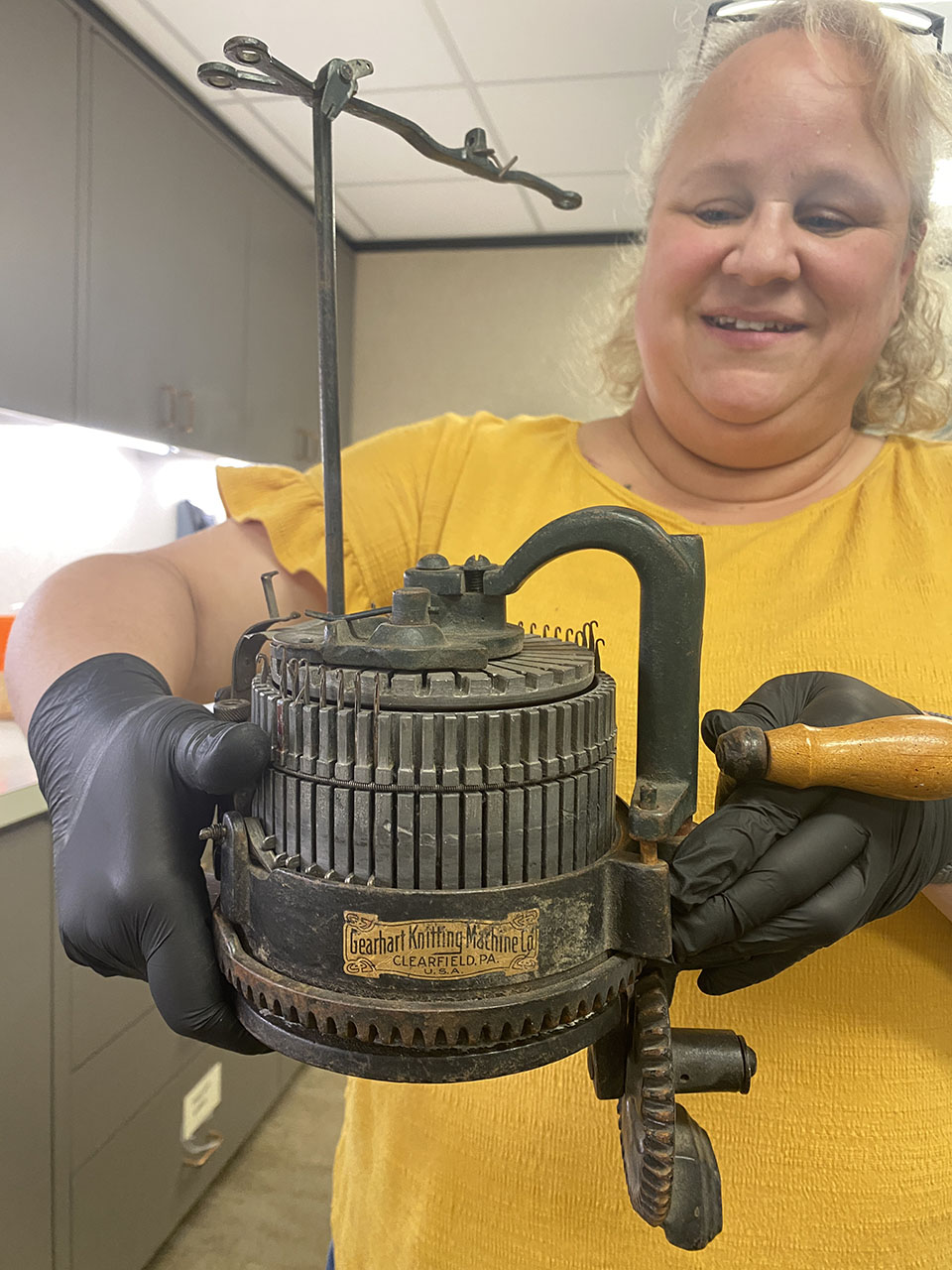
| Gearhart Knitting Machine | Rosenberg Library and Museum |
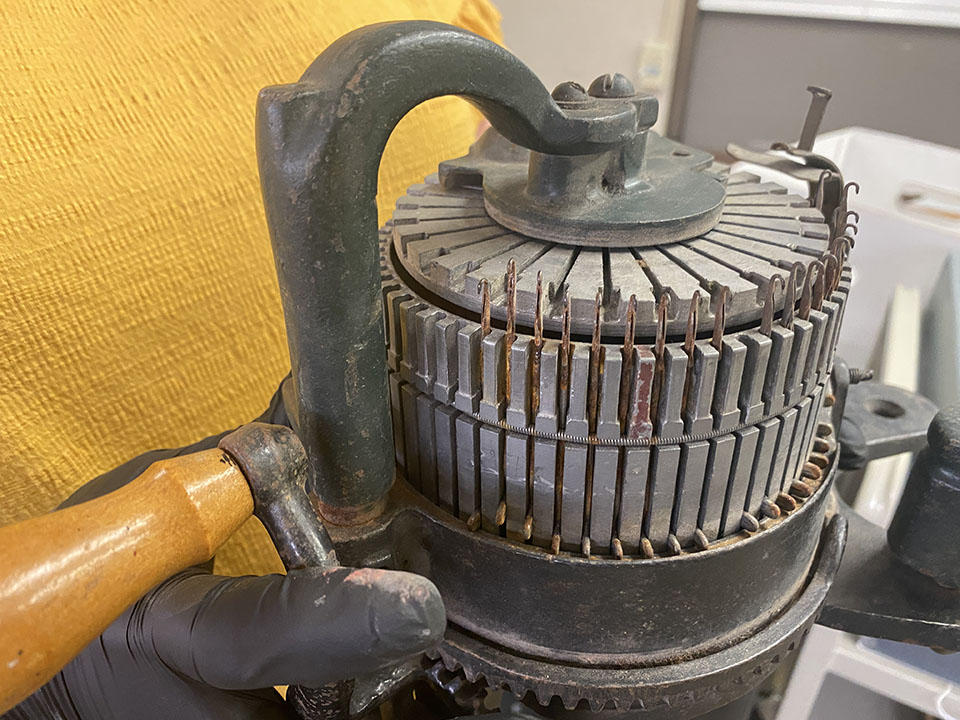
| Gearhart Knitting Machine | Rosenberg Library and Museum |
This 1914 Gearhart Knitting Machine was used during World War I in the offices of the American Red Cross Galveston Chapter, which was established in February 1916 as a result of efforts made by Dr. Henry Cohen. These offices were located on the first floor of the old City Hall building on 25th Street. The knitting machine was used to produce socks for service men. It is made of cast iron with metal needles on a rotating wheel. By turning the crank, people could produce socks faster than knitting by hand. A pair of socks knitted by hand could take about a week, but with the knitting machine it only took about an hour! This was important because the American military was in need of socks – a lot of socks. Why did they need so many socks?
During World War I, soldiers spent long periods of time in cold, wet conditions like trenches. These conditions could lead to a condition known as trench foot. Soldiers suffering from trench foot often had to leave their unit for medical care, which was not ideal in combat zones because it weakened the unit and the position they were defending.
Trench foot was caused by prolonged exposure to damp, cold, and unsanitary conditions. Initially, a solider with trench foot may feel tinging or numbness in his foot. As the condition progresses, the foot may change colors, swell, and even smell due to damage in the skin, blood vessels, and nerves of the feet. If left untreated, soldiers could develop gangrene and need amputation. If infection spread throughout the body or the amputation failed, it could even lead to death.
In order to combat trench foot, soldiers were encouraged to keep their feet dry and clean. To do so, they were given multiple pairs of socks and boots as often as possible. This meant the military needed many pairs of socks. As such, the government asked people to knit socks for the soldiers. Those helping to knit socks were often referred to as “civilian knitters.”
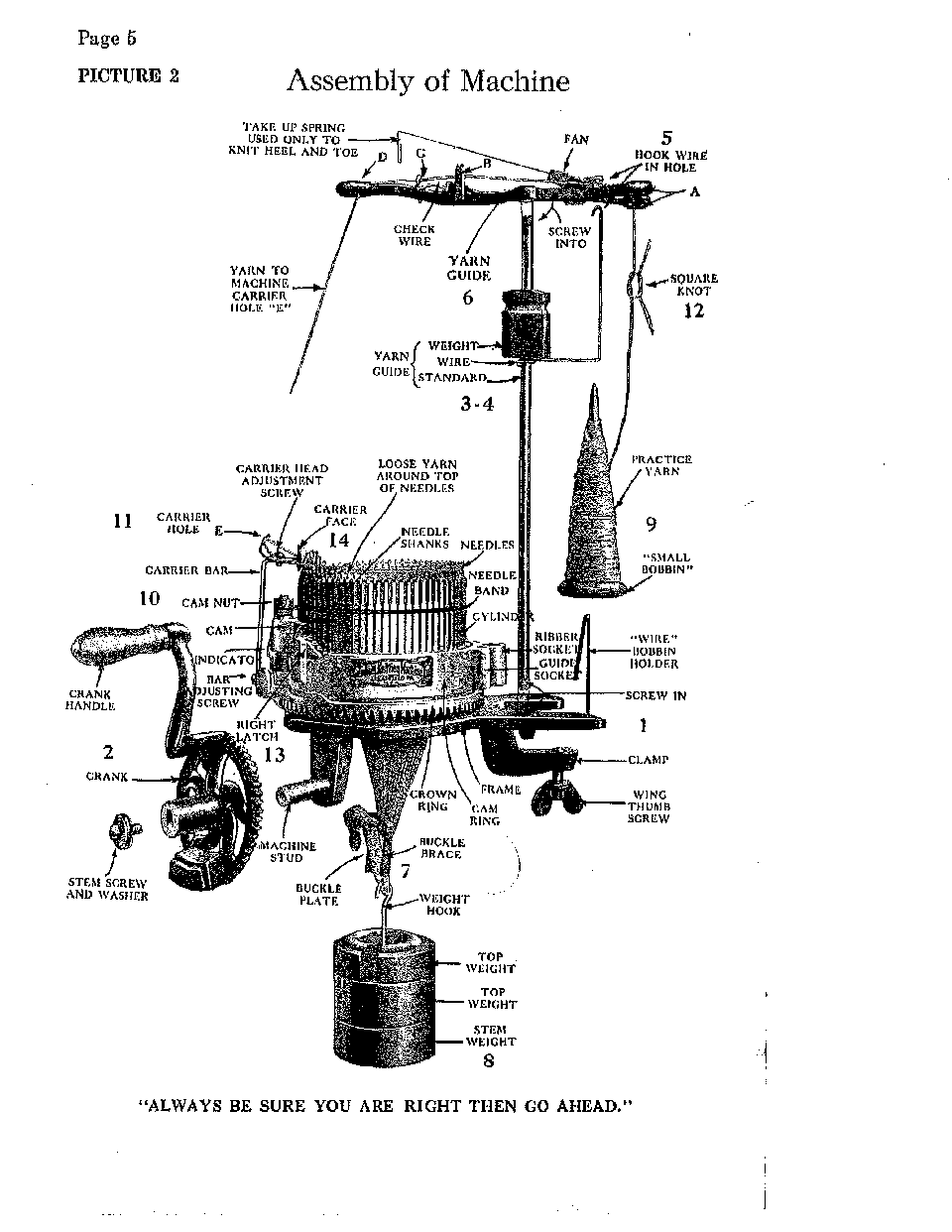
| Gearhart Knitting Machine Assembly Instructions | Courtesy of the Rosenberg Library and Museum |
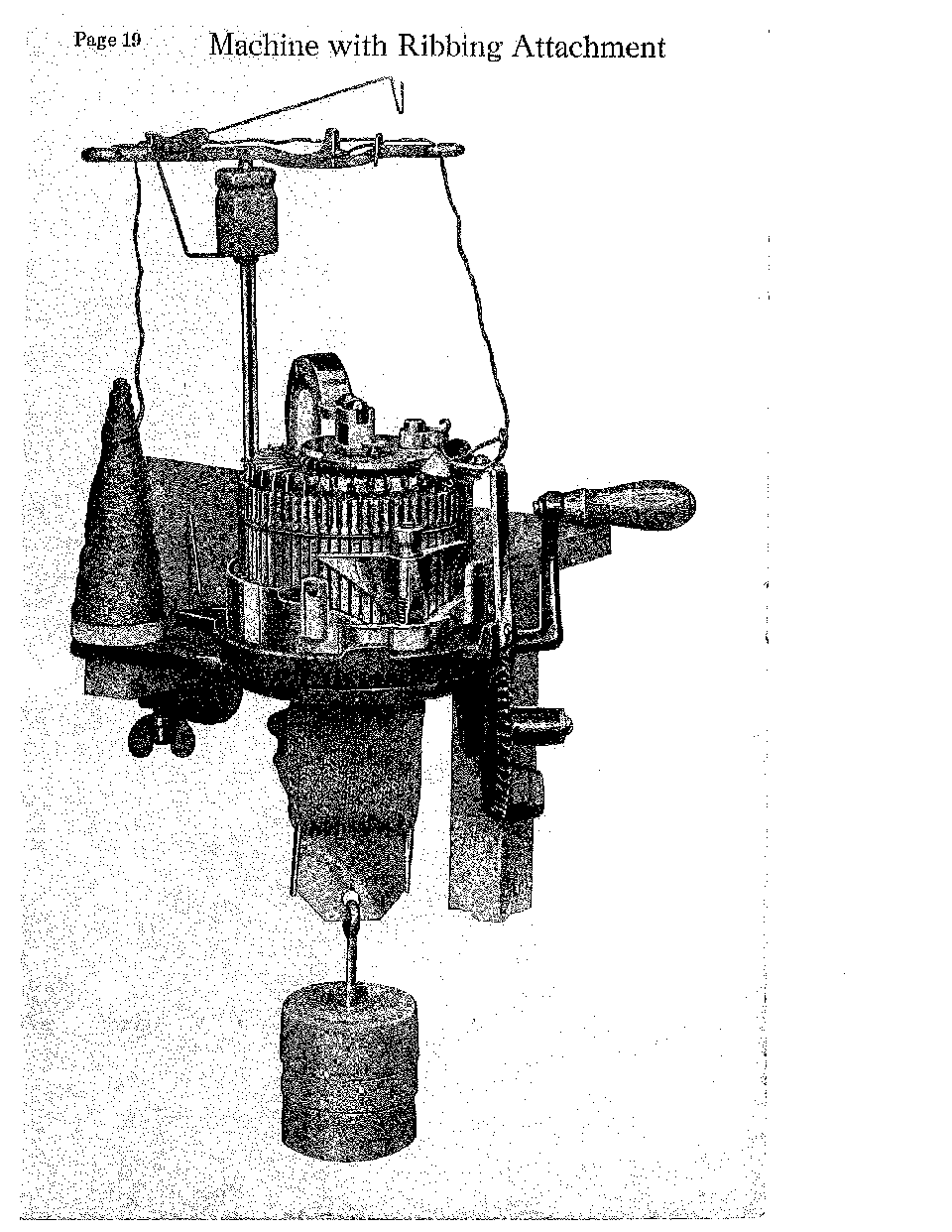
| Gearhart Knitting Machine Assembly Instructions | Courtesy of the Rosenberg Library and Museum |
Under the auspices of the International Red Cross, the United States, Canada, France, and other countries began to make socks for their soldiers. The Red Cross purchased and distributed wool and patterns to civilian knitters. They also gave away knitting machines, like the one on display, to homes that would commit to producing a minimum of 30 pairs of sock for the war effort. The families were allowed to keep the knitting machine afterward, and use it to make extra money.
The American Red Cross took charge of the mission to produce socks in the United States. They had seven divisions which were expected to provide 55,000 pairs of socks within three months. Each division had several chapters, including a chapter in Galveston. They also helped produce other knitted clothing such as mufflers, vests, gloves, and hats. American men, women, and children all helped to produce these items.
By keeping their feet warm and dry, soldiers were better equipped to stay on the front lines. Some say the community effort to produce socks helped the Allies win World War I.
Relax, Unwind, and Enjoy Luxury
Luxury Vacation Rentals Available
Rosenberg Library
Rosenberg Library has offered over a century of community service to the Galveston area, and is the oldest public library in Texas in continuous operation. The building itself was dedicated on June 22, 1904, the birthday of its patron, Henry Rosenberg. The Moody Memorial Wing opened in 1971, more than doubling the floor space and allowing for a children’s library, a history center, several galleries to showcase museum collections, and later, a computer lab. The Library accepted its first museum piece shortly after it opened in 1904. Since then, thousands of rare and interesting objects from around the world have been added to the collection. Each month they display a “Treasure of the Month”. Learn more by visiting the Rosenberg Library page and the Gifts of Henry Rosenberg section.